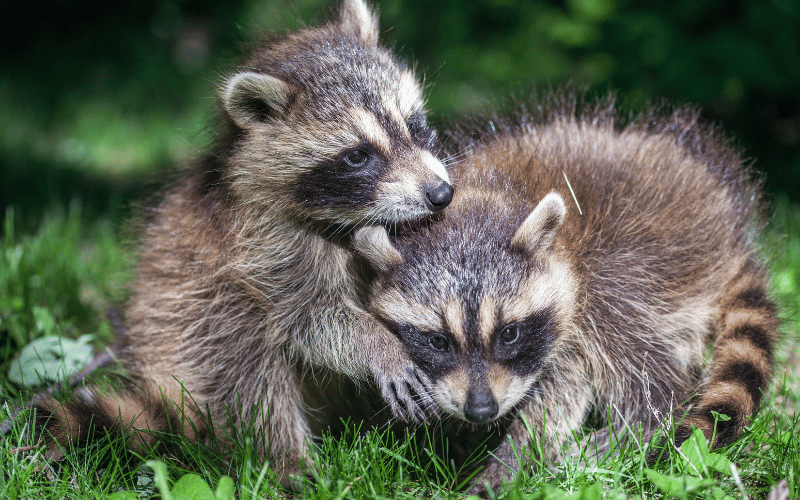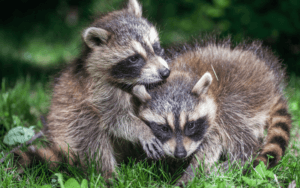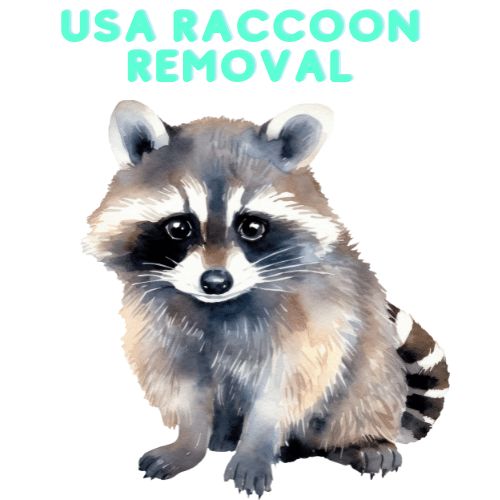
How to Get Rid of a Raccoon
Introduction
Raccoons are fascinating creatures that have adapted to urban life, often encroaching on human habitats. Understanding their behavior is crucial for effective management and removal. In this comprehensive guide, we’ll delve into various aspects of raccoon behavior, identification, infestation, and humane removal methods.
Whether you’re dealing with raccoons in your attic, garden, or yard, this article will equip you with the knowledge to address the situation effectively.
Understanding Raccoon Behavior

Habitat and Nesting
Raccoons are highly adaptable animals with a wide range of habitats and nesting preferences. They can be found in forests, urban areas, and rural landscapes, showcasing their versatility in adapting to various environments. Let’s explore their nesting habits in more detail:
- Natural Habitats: In natural settings, raccoons make use of tree cavities, hollow logs, and abandoned burrows as their nesting sites. These natural shelters provide them with protection and safety.
- Urban Environments: In urban areas, raccoons commonly seek shelter in attics, crawl spaces, sheds, and chimneys. This behavior often leads to conflicts with homeowners, as raccoons can become a nuisance when they inhabit human structures.
- Rural Landscapes: Raccoons prefer dens and burrows near water sources, such as streams or ponds, in rural settings. These locations offer raccoons easy access to food and water.
Overall, raccoons are resourceful in finding suitable nesting sites that protect them from predators and the elements, allowing them to thrive in diverse environments.
Diet and Feeding Habits
Raccoons have a diverse and adaptable diet, reflecting their omnivorous nature. Their highly opportunistic feeding habits allow them to thrive in various environments. Below are some key points about the diet and feeding habits of raccoons:
- Varied Diet: Raccoons consume many foods, including fruits, nuts, insects, small mammals, fish, and human food waste. This adaptability contributes to their ability to thrive in natural and urban settings.
- Opportunistic Feeders: These creatures are frequent visitors to gardens and outdoor areas, where they opportunistically scavenge for food. They are known to consume agricultural crops, leftovers, and discarded food items.
- Skilled Hunters: Raccoons exhibit hunting behavior and are capable of preying on birds, bird eggs, small mammals, and amphibians. Their ability to adapt their hunting strategies to different environments makes them formidable hunters.
- Foraging Behavior: With their dexterous front paws, raccoons exhibit a unique foraging behavior, often observed dunking their food in water before consumption. This behavior has led to their association with
Reproduction and Mating
Raccoons reproduce once a year, typically in late winter or early spring. Females, known as sows, seek out secure nesting sites to give birth to their kits, which can have litter sizes ranging from one to seven offspring.
Understanding raccoon mating and reproductive behaviors is essential for managing and preventing infestations, especially during the breeding season.
Identifying Raccoon Infestation
Identifying raccoon infestations early is crucial for effective intervention. Signs of infestation include:
- Presence of feces or urine in and around the property
- Scratching or thumping noises in the attic or walls
- Torn or damaged shingles and vents on the roof
Natural Deterrents
Raccoons are attracted to residential areas due to the availability of food and shelter. However, there are several natural deterrents that can help discourage raccoons from frequenting your property:
- Securing garbage cans with tight-fitting lids to prevent access to food waste.
- Remove fallen fruits and nuts from gardens to limit potential food sources.
- Install motion-activated lights and sprinkler systems to startle raccoons and deter them from your yard.
- Sealing entry points to potential nesting sites, such as attics, chimneys, and crawl spaces.
- Trimming tree branches and overhanging limbs to prevent easy access to rooftops and other nesting areas.
Humane Trapping and Removal
It’s important to prioritize humane trapping and removal methods when dealing with raccoon infestations. Professional wildlife experts can employ strategies such as live trapping and exclusion techniques to safely remove raccoons from residential properties without causing harm to the animals.
Once captured, the raccoons are released back into their natural habitat, ensuring a compassionate approach to wildlife management.
Professional Pest Control
Professional pest control services are crucial in managing severe raccoon infestations that threaten property and human health. These services are essential when DIY methods are ineffective and the presence of raccoons jeopardizes the safety and well-being of residents.
By engaging professional pest control, homeowners can benefit from the expertise and resources of trained professionals specializing in effective raccoon removal and prevention measures.
Professional pest control companies offer various services specifically designed to address severe raccoon infestations. These services include:
- Raccoon Inspection: The first step involves a comprehensive inspection of the property to identify the extent of the infestation, entry points, and areas of activity.
- Customized Removal Plans: Based on the assessment, pest control experts develop personalized removal plans tailored to the unique needs of the property and the severity of the infestation.
- Safe Removal and Relocation: Pest control professionals use humane and safe removal techniques to capture raccoons and relocate them to suitable habitats, away from residential areas.
- Preventive Measures: After removal, pest control companies implement preventive measures to fortify the property against future raccoon intrusions, such as sealing entry points, securing trash bins, and minimizing attractants.
Engaging professional pest control services offers several benefits, including:
- Expertise and Experience: Pest control professionals possess the knowledge and experience to deal with raccoon infestations effectively, ensuring thorough removal and prevention.
- Legal and Ethical Compliance: Reputable pest control companies operate in compliance with wildlife management laws and ethical standards, promoting the humane treatment of raccoons and adherence to regulations.
- Long-Term Solutions: Professional pest control offers long-term solutions that not only remove existing raccoon infestations but also prevent future recurrence, providing lasting peace of mind to homeowners.
Overall, professional pest control is an indispensable resource for homeowners facing severe raccoon infestations, as it ensures the effective and ethical management of wildlife while safeguarding residential properties.
Preventing Future Infestations
Preventing Future Infestations
- Implementing proactive measures is key to preventing future raccoon infestations. By taking the following steps, homeowners can minimize the risk of raccoon encounters and nesting on their properties:
- Regularly inspecting and securing potential entry points, such as gaps in roofs, walls, and foundations.
- Keeping outdoor areas clean and free of food waste, fallen fruits, and nuts that could attract raccoons.
- Installing hardware cloth or mesh over vulnerable areas to prevent raccoon access.
- Maintaining well-lit surroundings to deter nocturnal raccoon activity around the property.
- Seeking professional advice and inspection to identify and address vulnerabilities on the property.
Conclusion
In conclusion, understanding raccoon behavior and implementing effective management and removal techniques are pivotal for maintaining a harmonious coexistence with these adaptable creatures.
By prioritizing humane approaches and proactive prevention, homeowners can confidently navigate raccoon encounters, ensuring the well-being of both humans and wildlife.

